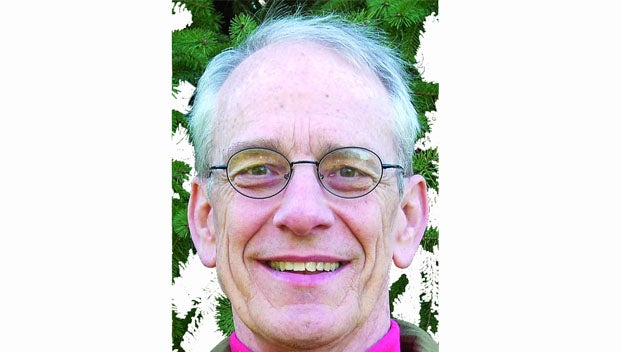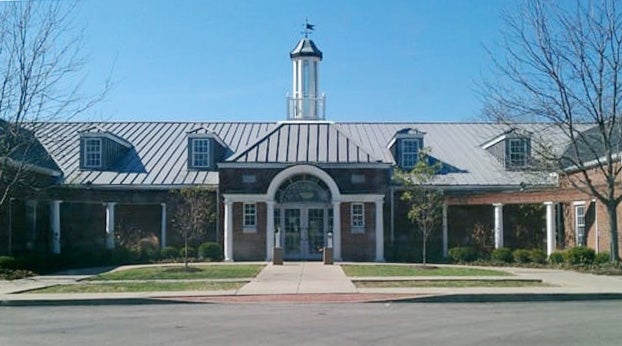Stories of veterans at Reeves Memorial Cemetery
Published 2:55 pm Friday, November 16, 2018
Editor’s note: The following column was written and submitted prior to Veterans Day, but was inadvertently omitted from the Friday, Nov. 9, edition of The Sun for which it was written.
Sunday marked the 100th anniversary of the armistice that ended World War I at the 11th hour on the 11th day of the 11th month of 1918.
The “War To End All Wars” left 9 million soldiers dead and 21 million wounded.
During the war, the U.S. mobilized 4.7 million men and suffered 116,516 deaths and 320,000 sick and wounded.
At the outset of America’s participation (1917), there was some question whether blacks who were experiencing racism of the Jim Crow era would answer the call to arms.
Roscoe Conkling Simmons, a journalist and orator from Louisville, responded, “Injustice to me there is, bad laws for me there are upon the statute books but there is for me and my people but one country and one flag.”
While touring the state in support of the war at President Woodrow Wilson’s request, Simmons gave a “magnetic speech” at the Winchester Opera House.
He denounced “hyphen-ism,” arguing that blacks are not “Afro-American” or “Negro-American” but “American.”
In Clark County, 508 men were inducted into service by the local draft board; 179, or 35 percent, of those were listed as “colored.”
As one author put it, “How strong was the American dream that they would fight for a liberty that they did not fully share.”
A number of those veterans now rest at Reeves Memorial Cemetery (see accompanying table).
Some of their stories are told here.
The Army, still segregated at that time, formed a number of all-black labor battalions, the Pioneer Infantry units.
The 64th with William Evans and James Tolbert did not make it overseas.
Harvey Williams’ 801st and Everett Carter’s 815th “marched a couple of weeks and practiced shooting a couple of weeks” then were sent to France in September 1918.
Although not engaged in combat, their units were placed near the front during the final offensive. They built roads, hauled ammunition, and buried the dead while contending with German shelling and gas attacks.
Jesse Perkins’ and Luther Fry’s 317th Labor Battalion, Bertie Seals’ and John Taylor’s 515th Engineers and Green Chenault’s 548th Engineers probably had similar experiences in France.
And while Arthur Hampton was in an African-American combat unit, the 92nd Division, his rank of “stable sergeant” also suggests a support role.
Insufficient information exists for the other veterans, with two exceptions.
The performance of Charles Chennell’s 369th Infantry and Joseph Watts’ 372nd Infantry changed the Army’s opinion about the fighting abilities of its black soldiers.
Both units were assigned to the French high command and participated in the Meuse-Argonne assault that resulted in the breakthrough of German lines that brought the war to an end.
Nicknamed the “Harlem Hellfighters,” the 369th landed in France in December 1917.
For much of their 191 days in the trenches, they were the only unit standing between the German army and Paris.
They distinguished themselves as the regiment that “never lost a man captured, a trench, or a foot of ground,” and then became the first allied unit to reach the River Rhine.
The 369th received the French Croix de Guerre and saw 171 of its men decorated for exceptional gallantry in action, while winning compliments from the French people and their white officers.
The 372nd reached France in April 1918. They served at the front from May until the armistice and formed part of the eastern flank during the Meuse-Argonne offensive. The unit met stiff German resistance and suffered heavy casualties.
French generals praised the performance of the 372nd. From the commander of the 157th Division, “For seven months we have lived as brothers at arms, partaking in the same activities, sharing the same hardships and the same dangers. Side by side we took part in the great Champagne Battle which was to be crowned by a tremendous victory.”
The regiment was awarded the Croix de Guerre and left behind a massive granite memorial to “the heroic American Negroes of the 372nd” killed in action.
Chennell, a Clark County native, died at the home of his cousin Johnson Tolbert on Washington Street.
He was a member of Ford Baptist Church and his funeral was conducted by the Rev. J.A. Taylor.
Joseph Watts was the son of Henry and Mary Alice Watts. He was born at Hedges in Clark County and resided in Winchester for many years.
Watts married first Allene Black and second Morean Nelson. He died of heart disease at the Veterans Hospital in Louisville.
He was a member of Allen Chapel CME, the American Legion, the Elks and Masons.
Harry Enoch, retired biochemist and history enthusiast, has been writing for the Sun since 2005. He can be reached at henoch1945@gmail.com.





